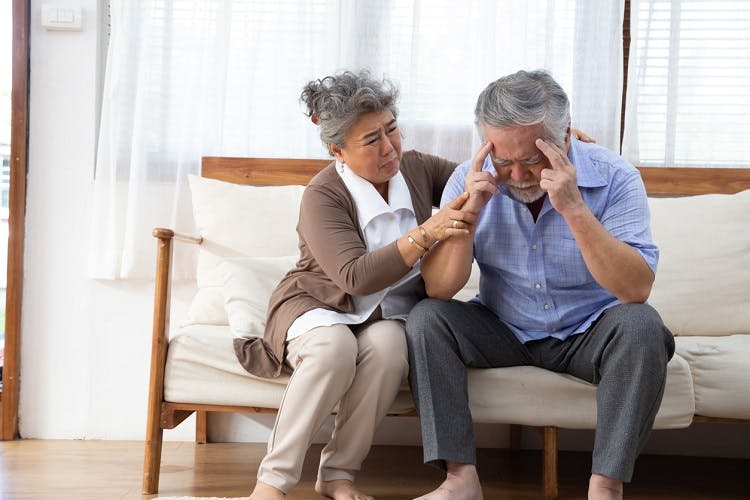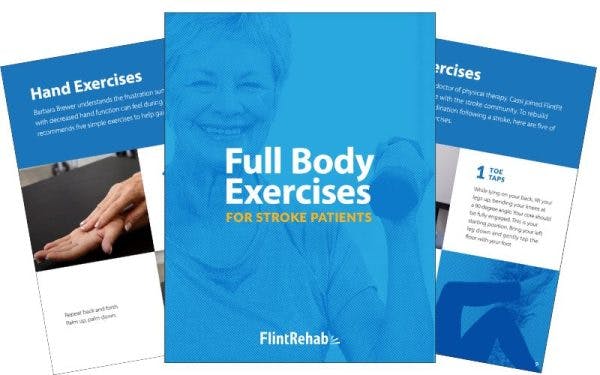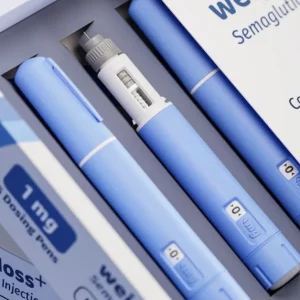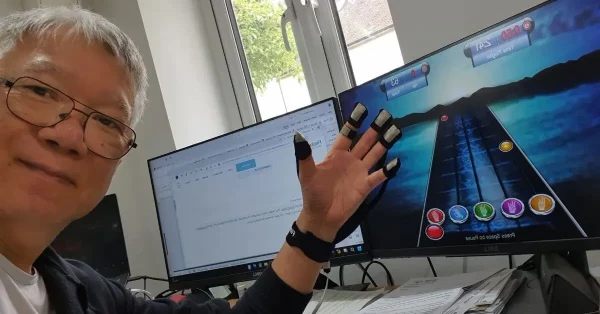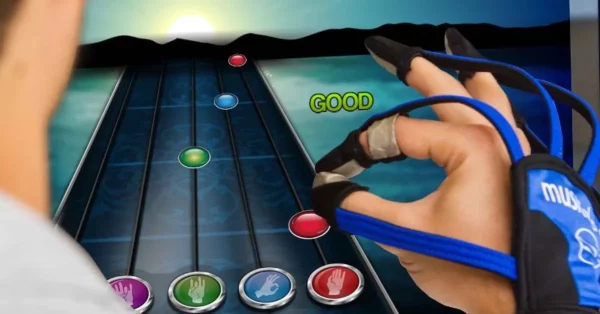Being aware of what a stroke may feel like can help individuals identify when a stroke is occurring. Recognizing the symptoms of stroke can allow individuals to promptly seek emergency medical attention, possibly even saving a life.
Every stroke is different and every recovery journey is unique. This uniqueness also applies to what a stroke feels like: every person who has a stroke will feel different symptoms and sensations. However, there are some common symptoms that many individuals experience when have a stroke.
This article will outline some of the common experiences stroke survivors may share. The personal stories of several stroke survivors will also be described to provide a deeper understanding of what a stroke feels like.
Use the links below to jump straight to any section:
- What does a stroke feel like?
- Act F.A.S.T. to spot a stroke
- Does a stroke hurt?
- What does a mini-stroke feel like?
- Silent strokes
- Survivor stories
What Does a Stroke Feel Like?
A stroke occurs when the supply of blood in the brain is disrupted by either a clogged or burst artery. Brain cells begin to die when they are deprived of oxygen-rich blood, which makes a stroke a medical emergency. Swift medical treatment is necessary to restore blood flow in the brain, minimize brain damage, and save the person’s life.
During a stroke, individuals won’t necessarily be able to feel the disruption of blood flow. Instead, they may experience sensations, cognitive changes, or emotions associated with the signs of stroke and the area of the brain that is affected.
Warning signs that a stroke may be occurring include:
- Numbness or weakness, especially on only one side of the body
- Confusion
- Difficulty speaking or comprehending speech
- Vision problems in one or both eyes
- Difficulty walking
- Dizziness
- Balance or coordination issues
- Severe headache (without reason)
Individuals may experience one or many of these symptoms during a stroke, which affects how the stroke may feel. Depending on the amount of damage sustained, these symptoms may persist even after proper blood flow is restored.
Individuals experiencing physical symptoms of stroke, such as a severe headache or dizziness, may feel frustrated or concerned about their symptoms. Those who experience other types of symptoms, such as difficulty speaking, may have feelings of panic and confusion.
Awareness of stroke symptoms may help individuals feel more prepared. However, a stroke is still a very intense, and potentially life-threatening, experience. This knowledge can bring about strong emotional feelings.
Act F.A.S.T. to Spot a Stroke
Although it is great to be aware of all of the stroke warning signs listed above, it is hard to remember the entire list. That’s why the American Stroke Association recommends remembering to think and act F.A.S.T. The acronym F.A.S.T. can be used to represent the most common signs of stroke. By remembering these signs, individuals can better identify when a stroke is occurring and quickly seek emergency help.
F.A.S.T. stands for:
- Facial drooping
- Arm weakness
- Slurred speech
- Time to call for emergency medical care
While individuals may not always feel these symptoms occurring, people nearby may be able to recognize them and call for help. Since these symptoms may not always seem obvious to the person experiencing them, some individuals may attempt to downplay their symptoms or refuse help. If this happens, try to urge the individual to seek help anyway.
Another quick and reliable method that can help identify stroke symptoms and act promptly is the Cincinnati Stroke Scale. While used mostly by healthcare professionals, it is simple and easy enough to be used by laypersons as well.
Stroke is one of the leading causes of death worldwide and a leading cause of long-term disability. Swift treatment can help minimize disability and save a life. Even if the individual only shows one of these early warning signs, call an ambulance immediately. The sooner an individual who is having a stroke receives medical attention, the better their prognosis will be.
Does a Stroke Hurt?
For many people, a stroke does not hurt. Individuals who experience a severe headache during a stroke may feel pain. However, it is more common for individuals to experience a variety of emotions during a stroke.
For example, individuals may experience confusion or fear if they can no longer control their movements or speech. Some individuals may experience euphoria if their cognition is affected in a particular way.
Furthermore, if a stroke has severely affected a person’s cognition, they may not be able to comprehend what is happening at all. This means the person may feel no physical sensations or unexpected emotions during a stroke, which can delay treatment. This is why it is critical to understand how to spot a stroke in order to help others get the swift medical treatment necessary to save a life.
What Does a Mini-Stroke Feel Like?
Sometimes the symptoms of a stroke go away on their own within a few minutes or hours. This is a sign of a transient ischemic attack (TIA), also known as a mini-stroke.
Mini-strokes are caused by a blood clot temporarily blocking an artery in the brain. They have the same symptoms as major strokes, which means they can feel very similarly. However, with mini-strokes, the symptoms go away on their own — generally resolving within 24 hours.
Although mini-strokes resolve on their own, they should be taken seriously. According to the American Stroke Association, approximately 1 out of 5 individuals who think they’ve experienced a mini-stroke will have a stroke within 90 days, almost half of which occur within just 1-2 days of the mini-stroke. Furthermore, when individuals seek treatment after a mini-stroke, 2 out of 5 individuals will discover that their suspected mini-stroke was an actual stroke.
Because of the high possibility of a mini-stroke foreshadowing a full-blown stroke, the American Heart Association released a new statement in 2023 recommending that those with a suspected mini-stroke should undergo emergency medical assessment. Therefore, it is essential to promptly seek emergency medical care when any signs of stroke occur, even if they are short-lived.
Silent Strokes
Although many people experience one or more symptoms when stroke occurs, there are some cases where there are no apparent symptoms. This type of stroke is referred to as a silent or asymptomatic stroke.
When an individual has a silent stroke, they will not feel anything out of the ordinary. Although silent strokes may involve very subtle symptoms, unless the person happens to require a brain scan, a silent stroke can occur completely undetected.
Silent strokes are more common as individuals age, and can be seen 1 in 4 adults over age 80. It is estimated that 10 silent strokes occur for every diagnosable stroke, and up to 60% of individuals presenting with a first-time ischemic stroke have already sustained a silent stroke. Although silent strokes are challenging to detect, they are linked to an increased risk of future stroke and dementia.
Survivors Share What a Stroke Feels Like
The three videos below detail the feelings that different survivors experienced during their stroke.
Jill Bolte Taylor is a neuroanatomist who had a stroke. During her stroke, she experienced several symptoms including headache, loss of consciousness, poor balance, and paralysis of her right side. Because of her background in neurology, she was able to quickly identify that she was having a stroke and call for help.
It was not easy for her to call for help though, which is why it is important for everyone to educate themselves about the symptoms of a stroke and know when to call for help. For more information regarding Jill’s journey, check out her book, My Stroke of Insight, which is one of many books among Flint Rehab’s list of the best books on stroke recovery.
In this second video, Jim shares what his stroke felt like. He explains feeling as if he woke up extremely tired in the middle of the night and was unable to process his thoughts or get words out. Moreover, everything felt like it was occurring in slow motion and he was unable to understand where his body was in space.
Finally, this video highlights the experience of Areti, a 28 year old elementary teacher who experienced a stroke at school. In the middle of teaching a lesson, she realized she was slurring her words and was unable to speak clearly. She also began feeling dizzy and lost feeling in the left side of her body.
Although Areti knew the warning signs of stroke and was aware of her symptoms, she did not realize that she was having a stroke. Luckily, her coworkers were nearby and able to call for emergency medical assistance. Again, this demonstrates the importance learning the warning signs of stroke for the safety of oneself and others.
Understanding What a Stroke Feels Like
Every stroke is unique and will feel different depending on the severity and the location of the blocked or burst artery. While individuals cannot feel blood supply being cut off during a stroke, they may exhibit some very distinct signs of a stroke including facial drooping, arm weakness, and slurred speech. These signs, among others, can cause a variety of physical sensations and emotions.
Being aware of how a stroke may look and feel can help not only the person experiencing the stroke, but those around them. By knowing the warning signs of stroke and seeking immediate medical attention, individuals can minimize the impact of brain damage and potentially save a life.
